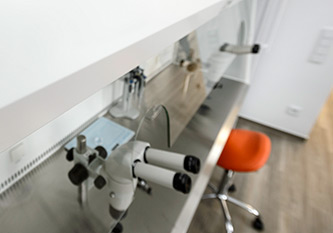
IVF
Warum raten wir zu einer ###################?
Lorem Ipsum duis autem vel eum iriure dolor in hendrerit in vulputate velit esse molestie consequat, vel illum dolore eu feugiat nulla facilisis.
Ablauf
Lorem Ipsum duis autem vel eum iriure dolor in hendrerit in vulputate velit esse molestie consequat, vel illum dolore eu feugiat nulla facilisis.
Risiken und mögliche Komplikationen
Lorem Ipsum duis autem vel eum iriure dolor in hendrerit in vulputate velit esse molestie consequat, vel illum dolore eu feugiat nulla facilisis.
Vor dem Eingriff
Bitte legen Sie einschlägige Unterlagen vor. Informieren Sie uns über alle Medikamente, die Sie derzeit einnehmen.
Nach dem Eingriff
Lorem Ipsum duis autem vel eum iriure dolor in hendrerit in vulputate velit esse molestie consequat, vel illum dolore eu feugiat nulla facilisis.
Sprechen Sie uns an, wir beraten Sie gerne.
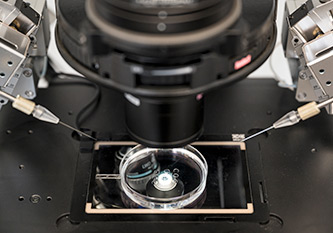
ICSIx
Warum raten wir zu einer ###################?
Lorem Ipsum duis autem vel eum iriure dolor in hendrerit in vulputate velit esse molestie consequat, vel illum dolore eu feugiat nulla facilisis.
Ablauf
Lorem Ipsum duis autem vel eum iriure dolor in hendrerit in vulputate velit esse molestie consequat, vel illum dolore eu feugiat nulla facilisis.
Risiken und mögliche Komplikationen
Lorem Ipsum duis autem vel eum iriure dolor in hendrerit in vulputate velit esse molestie consequat, vel illum dolore eu feugiat nulla facilisis.
Vor dem Eingriff
Bitte legen Sie einschlägige Unterlagen vor. Informieren Sie uns über alle Medikamente, die Sie derzeit einnehmen.
Nach dem Eingriff
Lorem Ipsum duis autem vel eum iriure dolor in hendrerit in vulputate velit esse molestie consequat, vel illum dolore eu feugiat nulla facilisis.
Sprechen Sie uns an, wir beraten Sie gerne.
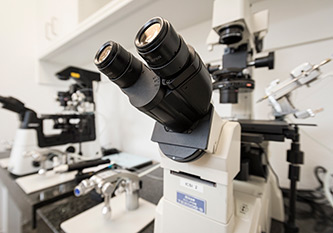
PICSIx
What is PICSI?
PICSI is the abbreviation for "Physiological ICSI".
How does PICSI work?
In addition to the morphology of the sperm cells, the maturation of the sperm cells is also important when using ICSI. The shell of the egg contains hyaluronan (hyaluronic acid) and in case of a natural fertilization, only mature sperm cells that contain the correct receptors (hyaluronidase) can come into contact with the shell of the egg and enter the egg hence leading to fertilization. The ability of sperm to ingest hyaluronan, therefore, reflects the natural fertilization process, and better predicts sperm behaviour during fertilization. In the laboratory it is possible to mimic this by means of a specially developed Petri dish, and to select these mature sperm cells for use in the ICSI procedure, given a sufficient amount of sperm cells to select from.
Why PICSI?
Studies show that sperm cells with the correct receptors appear to contain less DNA damage and fewer chromosomal abnormalities than sperm cells selected by eye under the microscope. This appears to increase embryo quality, the chance of implantation and the chance of the birth of a healthy child, while the risk of miscarriage appears to decrease with the use of PICSI.
For whom and when is PICSI recommended?
PICSI is advised in case of a high degree of DNA fragmentation, low normal sperm count (morphology), low fertilization rate with regular IVF/ICSI, suboptimal embryo development or poor embryo quality in prior IVF/ICSI attempts, implantation failure and/or repeated miscarriages. The indication is set by your attending gynecologist. The additional costs of PICSI are usually not reimbursed by your health insurance company.
Please contact us for more information.
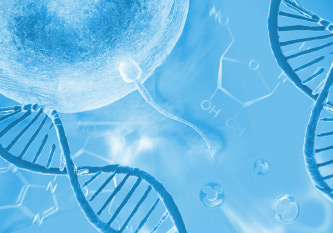
Microfluidic Sperm Sorting Chipx
What is the Microfluidic Sperm Sorting Chip?
The Microfluidic Sperm Sorting Chip (also called "Fertile Chamber") is a sperm selection method for IVF and ICSI treatments. There are also chips that can be used for insemination treatments.
How does the Microfluidic Sperm Sorting Chip work?
With a specially developed instrument, which looks like a transparent chip with microchannels (free of chemicals) up to a size of a few hundred µm, sperm cells without DNA damage can be selected and then used for fertility treatment, such as insemination (IUI), IVF or ICSI. The chip operates with very small volumes, imitating the natural flow and cell size, given a sufficient number of sperm cells to select from. The advantage is that the chip does not at any time damage vital sperm cells, and does not ignore the barriers to sperm cells that are present in nature. In this way natural selection can be imitated.
Why the Microfluidic Sperm Sorting Chip?
With regular fertility treatments, the sperm must be processed to make it suitable for insemination, IVF or ICSI. These are usually more lengthy methods in which the sperm cells are for instance centrifuged and possibly damaged. Part of the sperm cells naturally have DNA damage (oxidative damage), which can increase by processing the sperm cells. This may lead to DNA fragmentation and therefore poorer results in fertility treatments. The chip is able to mimic the natural sperm cell selection in a fast and gentle way, so that the sperm cells with better motility, and without DNA damage or chromosomal abnormalities, have the advantage. This seems to increase the embryo quality, the chance of implantation and the chance of the birth of a healthy child, while the chance of miscarriages with the use of the chip seems to decrease.
For whom and when is the Microfluidic Sperm Sorting Chip recommended?
The use has a certain overlap with the PICSI method. The chip is therefore recommended in case of a high degree of DNA fragmentation, low normal sperm count (morphology), low fertilization rate with regular IVF/ICSI, suboptimal embryo development or poor embryo quality in prior IVF/ICSI attempts, implantation failure and/or repeated miscarriages. The indication is set by your attending gynecologist. The additional costs of PICSI are usually not reimbursed by your health insurance company.
Please contact us for more information.
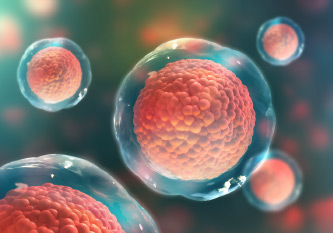
Kalzium-Ionophorx
Warum raten wir zu einer ###################?
Lorem Ipsum duis autem vel eum iriure dolor in hendrerit in vulputate velit esse molestie consequat, vel illum dolore eu feugiat nulla facilisis.
Ablauf
Lorem Ipsum duis autem vel eum iriure dolor in hendrerit in vulputate velit esse molestie consequat, vel illum dolore eu feugiat nulla facilisis.
Risiken und mögliche Komplikationen
Lorem Ipsum duis autem vel eum iriure dolor in hendrerit in vulputate velit esse molestie consequat, vel illum dolore eu feugiat nulla facilisis.
Vor dem Eingriff
Bitte legen Sie einschlägige Unterlagen vor. Informieren Sie uns über alle Medikamente, die Sie derzeit einnehmen.
Nach dem Eingriff
Lorem Ipsum duis autem vel eum iriure dolor in hendrerit in vulputate velit esse molestie consequat, vel illum dolore eu feugiat nulla facilisis.
Sprechen Sie uns an, wir beraten Sie gerne.
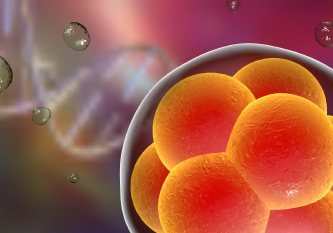
Time-Lapse Imagingx
Warum raten wir zu einer ###################?
Lorem Ipsum duis autem vel eum iriure dolor in hendrerit in vulputate velit esse molestie consequat, vel illum dolore eu feugiat nulla facilisis.
Ablauf
Lorem Ipsum duis autem vel eum iriure dolor in hendrerit in vulputate velit esse molestie consequat, vel illum dolore eu feugiat nulla facilisis.
Risiken und mögliche Komplikationen
Lorem Ipsum duis autem vel eum iriure dolor in hendrerit in vulputate velit esse molestie consequat, vel illum dolore eu feugiat nulla facilisis.
Vor dem Eingriff
Bitte legen Sie einschlägige Unterlagen vor. Informieren Sie uns über alle Medikamente, die Sie derzeit einnehmen.
Nach dem Eingriff
Lorem Ipsum duis autem vel eum iriure dolor in hendrerit in vulputate velit esse molestie consequat, vel illum dolore eu feugiat nulla facilisis.
Sprechen Sie uns an, wir beraten Sie gerne.
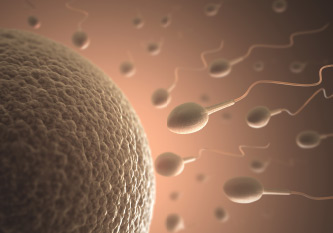
(Mikro-) TESEx
Warum raten wir zu einer ###################?
Lorem Ipsum duis autem vel eum iriure dolor in hendrerit in vulputate velit esse molestie consequat, vel illum dolore eu feugiat nulla facilisis.
Ablauf
Lorem Ipsum duis autem vel eum iriure dolor in hendrerit in vulputate velit esse molestie consequat, vel illum dolore eu feugiat nulla facilisis.
Risiken und mögliche Komplikationen
Lorem Ipsum duis autem vel eum iriure dolor in hendrerit in vulputate velit esse molestie consequat, vel illum dolore eu feugiat nulla facilisis.
Vor dem Eingriff
Bitte legen Sie einschlägige Unterlagen vor. Informieren Sie uns über alle Medikamente, die Sie derzeit einnehmen.
Nach dem Eingriff
Lorem Ipsum duis autem vel eum iriure dolor in hendrerit in vulputate velit esse molestie consequat, vel illum dolore eu feugiat nulla facilisis.
Sprechen Sie uns an, wir beraten Sie gerne.
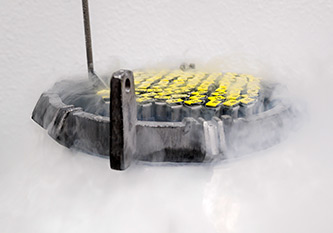
Kryokonservierung / Kryopreservierungx
Warum raten wir zu einer ###################?
Lorem Ipsum duis autem vel eum iriure dolor in hendrerit in vulputate velit esse molestie consequat, vel illum dolore eu feugiat nulla facilisis.
Ablauf
Lorem Ipsum duis autem vel eum iriure dolor in hendrerit in vulputate velit esse molestie consequat, vel illum dolore eu feugiat nulla facilisis.
Risiken und mögliche Komplikationen
Lorem Ipsum duis autem vel eum iriure dolor in hendrerit in vulputate velit esse molestie consequat, vel illum dolore eu feugiat nulla facilisis.
Vor dem Eingriff
Bitte legen Sie einschlägige Unterlagen vor. Informieren Sie uns über alle Medikamente, die Sie derzeit einnehmen.
Nach dem Eingriff
Lorem Ipsum duis autem vel eum iriure dolor in hendrerit in vulputate velit esse molestie consequat, vel illum dolore eu feugiat nulla facilisis.
Sprechen Sie uns an, wir beraten Sie gerne.
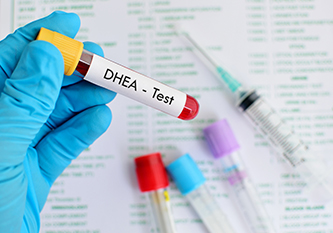
DHEA (Dehydroepiandrosteron)x
What is DHEA?
DHEA is the abbreviation for "dehydroepiandrosterone", and is a steroid hormone which is – amongst other organs – produced by the adrenal glands from cholesterol. It plays an important role in for instance metabolism, muscle strength and sexuality. In addition, it has immuno- and neuromodulatory properties. DHEA can be converted into androstenedione, testosterone and other steroids (including estrogens). The storage form of DHEA is DHEAS. Between the ages of 20 and 30, the adrenal glands show a peak in DHEA production, after which the production capacity declines steadily. DHEA is used "off-label" for all kinds of purposes (including depression, immune problems, prevention of cardiovascular disease and the prevention of osteoporosis). Contrary to popular belief, DHEA is not an anabolic steroid, even though it is sometimes used in the gym. However, it has never been shown that this hormone has a muscle-building effect.
DHEA and fertility
For many years there has been extensive attention to the role of steroid hormones in reproductive medicine, especially in women with low AMH and / or age > 35 years. The idea is that the environment that plays a role in the development of an egg may be positively influenced by DHEA. As a result, more eggs may become more sensitive to stimulation during a treatment, and possibly fewer genetically abnormal eggs may be develop. There are many studies that show that the number of pregnancies and live births in IVF and ICSI, provided the correct indication and under supervision of a doctor, are positively influenced by DHEA. However, it is not yet so far that the use of DHEA is seen as "evidence-based medicine", although there are plenty of studies which unmistakably report a positive effect. That has also been our experience for years.
Indication, dosage and control
DHEA is a precursor hormone/prohormone and should therefore not be taken on your own initiative. First, it should be determined by blood tests whether there is a possibility to take DHEA at all, without a major risk of side effects. It may then also be better determined which dosage can be useful. Quite typically, dosages of 25-75 mg per day are used for at least 6 weeks before a new hormone stimulation can be started as part of an IVF/ICSI treatment. It is often started with 25-50 mg per day, depending on the blood values. A few weeks after starting the medicine, another blood test should be performed to test the levels and adjust the dose if necessary. The use of DHEA is strictly "off-label".
Side effects
DHEA is certainly not suitable for everyone; therefore assessment and monitoring is important. Side effects may occur, although they are practically rarely seen (<10% of patients), and such is also our experience. Possible negative side effects may include unwanted hair growth or hair loss, acne/oily (scalp)skin, cycle and menstrual bleeding disorders, voice change (<1%) and agitation (irritability and restlessness), which have been reported in the literature. Theoretically, the risk of (hormone-sensitive) cancers could be increased. This is essentially the case with the use of any hormone, and remains a particularly controversial topic of discussion among experts. In addition, it should be realized that the DHEA level often drops rapidly from the age of 30, and that in women around the menopause, other hormones sometimes become elevated for a long time.
Positive side effects are often also reported: many women report more energy, a better mood, sometimes increased sexual desire, better brain function and more endurance.
Reimbursement
DHEA is commonly not reimbursed by your health insurance company. However, on the basis of primary or secondary adrenal insufficiency with a reduced quality of life, an application for reimbursement - only if you have a Dutch health insurance - can be submitted to your health insurer. The positive effect on general functioning, psychological well-being and sexuality, may be a reason to reimburse DHEA for an indefinate period. You can here find an application form with which you can submit an application.
Please contact us for more information.
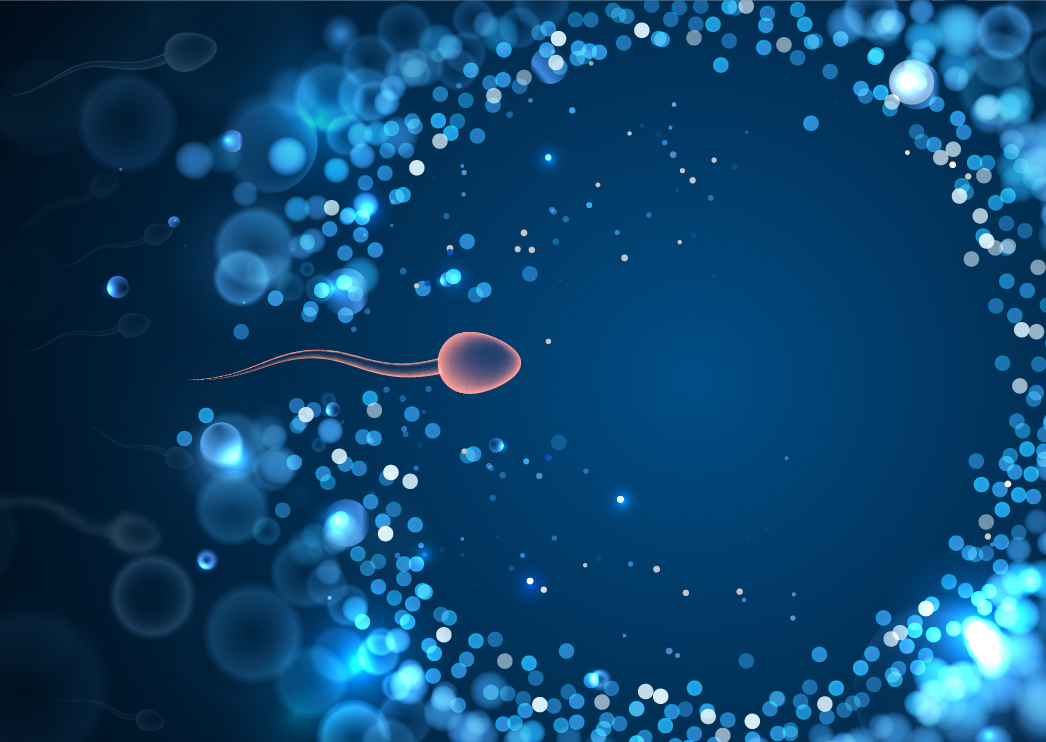
IUIx
During insemination treatment, sperm cells are inserted into the uterine cavity using a catheter. If the partner's sperm is used, this is referred to as a 'homologous IUI'. If sperm from a donor is used, this is referred to as a 'heterologous IUI' or 'A-IUI'.
Insemination treatment can be considered in various situations, e.g.:
- The quantity and/or quality of the semen is only slightly impaired
- The cervix and/or cervical mucus does not allow sperm to pass
- A pregnancy has not occurred for a long period of time without a clear cause ('idiopathic sterility')
- Sexual problems that prevent sperm from entering the vagina
- The absence of a male partner, necessitating insemination treatment with donor sperm. Please inform yourself separately about the legal and other requirements for this (e.g. the nationwide Samenspender-Register).
Insemination only offers a chance of success if it takes place in direct connection with ovulation. The treatment can be carried out in a natural or stimulated cycle. In a natural cycle, the day of insemination depends on the time of the positive LH test (urine self-test). If the maturation of the oocytes is disturbed, or if the aim is to develop more than one follicle, the ovaries can be stimulated with hormones (injections or tablets) in order to increase the chances of pregnancy. In this case, the cycle should always be monitored using ultrasound, and ovulation is triggered hormonally, on the instructions of the doctor treating you.
On the day of insemination, the man must provide a fresh sperm sample, which is processed. Certain substances and bacteria are removed from the semen and the mobile sperm cells are concentrated. Depending on the process, this can take 1-2 hours. In the case of treatment with donor sperm, this is thawed on the day of insemination; this usually takes half an hour.
The insemination takes place on the gynecological chair. After inserting the speculum, the doctor inserts a catheter (thin, soft and flexible tube) directly into the uterine cavity under visual control, and the sperm cells are slowly injected into the uterine cavity. This is rarely associated with pain. However, the uterus may have to be stretched a little with an instrument, which can be uncomfortable. However, this is rarely necessary. After the insemination you can basically do everything you normally do, except for smoking and drinking alcohol. Sexual contact is also allowed. You can find out from your doctor whether other advice applies to your individual case.
After about 14 days, a pregnancy test can be carried out using a urine or blood sample, and further arrangements are made. It is not uncommon for multiple insemination treatments to be required to result in pregnancy. The success rate is 10-20% per treatment cycle. The best results are achieved with only minor impaired semen parameters, use of donor sperm, short duration of fertility problems, younger age and healthy weight of the woman, and non-smokers. Despite all due diligence, success cannot be guaranteed. Upon request or indication, the patency of the fallopian tubes can be checked before or during the treatment.
Like most centres, we do not have our own sperm bank. However, in Europe, certain parties have focused on selling donor sperm. It goes without saying that we have our own cryo storage facility so that straws with donor sperm that you have bought can be stored without any problems.
The risks of insemination treatment are very small but cannot be ruled out. Despite all care, complications can occur that require further treatment/operations. Your doctor will be happy to discuss this with you.
Please contact us for more information.

Social Freezingx
What is ‘Social Freezing’?
‘Social egg freezing’, or ‘social freezing’ for short, is a technique in which people can store their eggs without medical indication, in order to secure their fertility in the future to some extent. It offers women the opportunity to postpone having children. The technique originates from the freezing of cells before the start of oncological treatments. Due to the advent of ultra-fast cryopreservation (‘vitrification’), a much higher survival rate of eggs was seen, resulting in significantly higher chances of pregnancy compared to the older freezing methods. The frozen egg therefore has a more or less identical fertility potential as a fresh egg.
The option of creating a personal egg depot is also increasingly desired and requested by healthy women. After all, fertility is finite, and the peak is between the ages of 18 and 30, after which fertility decreases. Not only does the number of egg cells decrease over time, but it is especially the quality of the egg cells that plays a major role. In a 25-year-old woman, approximately 80 % of the eggs are healthy, while in a 40-year-old woman this usually concerns at most 20 %.
What are the reasons for undergoing ‘social freezing’?
There are many reasons for undergoing ‘social freezing’. A frequently mentioned reason is a missing partner (social aspect), but economic aspects (career planning), reproductive autonomy (control over one’s own fertility), and psychological aspects (more or less ensuring fertility) also play a role. In all cases, however, it concerns the freezing of eggs without medical indication.
How does ‘social freezing’ proceed?
After an intake, ultrasound and blood test, an individual treatment plan is drawn up. In order to develop a sufficient number of eggs, hormone stimulation must be started. As a rule, we perform this in our centre during the patient's own cycle, and it is even possible if you have an IUD or a hormone implant. If you do not have hormonal contraception, you can basically start during each menstruation.
Often only one injection per day is needed (this is placed in the abdominal skin) while ovulation is usually suppressed by means of an oral tablet. Monitoring the number and growth of the follicles is done by means of vaginal ultrasound. Often two ultrasounds are needed to be able to plan the retrieval (this is often after 9-10 days of hormone injections). After triggering the ovulation by means of 1-2 injections, the follicles are punctured and emptied by means of a vaginal puncture under sedation. In the laboratory we determine whether and how many suitable eggs are available. After the retrieval, you will hear immediately how many eggs have been found. You will hear how many eggs have ended up in the freezer usually one day later. These are stored in our own centre and can remain in storage for years. From the start of the injection to the day of the puncture, 11-12 days often pass.
How many eggs are needed?
To determine how many eggs are needed to have a high probability of a child, the ovarian reserve (measured by the AMH level) and age are particularly important. If you are younger than 30 years old, you have approximately a 75 % chance of a live birth with 10 eggs. This percentage increases to approximately 95 % when you have frozen 20 eggs. However, if you are 40 years old, these percentages are 30 % and 50 % respectively, and decrease rapidly. The younger you are, the fewer eggs are needed to have a high probability of at least one child. Research shows that the greatest effect of ‘social freezing’ can probably be seen around the age of 37. After all, the quantity and quality of the eggs are usually still reasonably good at that moment in time, but will decrease relatively quickly from then on. The probability therefore increases that in the years thereafter one will have to make use of the eggs that have been frozen, and the quality of which will be better.
What are the advantages and disadvantages of ‘social freezing’?
By freezing young eggs, they are spared from aging processes. This means that genetic abnormalities will also occur less often when eggs are frozen at a younger age.
A disadvantage is that this elective method is of course not without risks. Hormones are used and a retrieval has to take place. For more information we refer you to the information about IVF/ICSI treatment elsewhere on our website. The medical risks are nevertheless small and are around 0.4 %.
It is important to realise that an existing frozen depot of eggs is unfortunately no guarantee for a pregnancy. Moreover, when they are to be used, they must first be thawed, fertilised by means of an ICSI treatment and allowed to grow into an embryo. Not all eggs come out of the freezer intact, not every ICSI leads to fertilisation and not every fertilisation leads to an embryo and/or pregnancy.
In addition, aspects such as increasing age (and therefore also increasing risks in pregnancy) and the storage period also play a major role. At some point, one must say goodbye to the eggs when age advances, and a pregnancy is no longer opportune. The freedoms that a depot of eggs entails also raise medical, ethical and social questions.
What are the costs of ‘social freezing’?
The costs of the treatment are formed by the consultations, blood and ultrasound examination, medication, anaesthesia, puncture and freezing. Storage costs are also calculated every six months. You can of course request a price list via our secretariat. The costs will not be reimbursed by your insurer, as this is an elective treatment.
For more information, please contact us.

EmbryoGlue®x
The embryo transfer, being the final step in IVF or ICSI treatment, is one of the most sensitive and crucial to its success. To achieve pregnancy, a transferred embryo must be able to implant itself in the uterine lining (endometrium).
What is EmbryoGlue®?
Hyaluronic acid (also known as hyaluronan) occurs naturally in the uterus and is crucial for embryo implantation. It acts like an adhesive, improving the embryo's attachment to the uterine lining and potentially facilitating the implantation process. It is believed that hyaluronic acid also promotes decidualization, the preparation of the uterine lining for implantation, and that higher concentrations of hyaluronic acid help to better mimic uterine fluid and the intrauterine environment. EmbryoGlue®, an embryo culture medium enriched with hyaluronic acid, specially developed for this procedure, supports the embryo in this process.
How does EmbryoGlue® work?
Before transfer, the embryo is placed in EmbryoGlue® for a period of time. It is then transferred into the uterus with a small amount of this special transfer medium using a special transfer catheter. It has been scientifically proven that EmbryoGlue® can increase the likelihood of implantation and thus the chance of pregnancy and live birth without increasing the risk of adverse complications. Studies and research show a potentially positive effect on implantation, pregnancy, and live birth rates compared to control groups using transfer media containing little or no hyaluronic acid.
For whom and when is EmbryoGlue® recommended?
EmbryoGlue® is believed to be most beneficial for patients with a poor prognosis, such as those over 35 years of age, patients with poor embryo quality, or patients with multiple failed cycles. The final indication is always determined by the treating physician.
The medium is suitable for the transfer of all embryonic stages from day 2 to day 6 from fresh and cryocycles, as well as for embryos with an open zona pellucida after assisted hatching or biopsy procedures. The additional costs for EmbryoGlue® are usually not reimbursed by your health insurance provider.
For more information, please contact us.